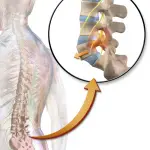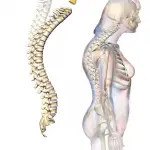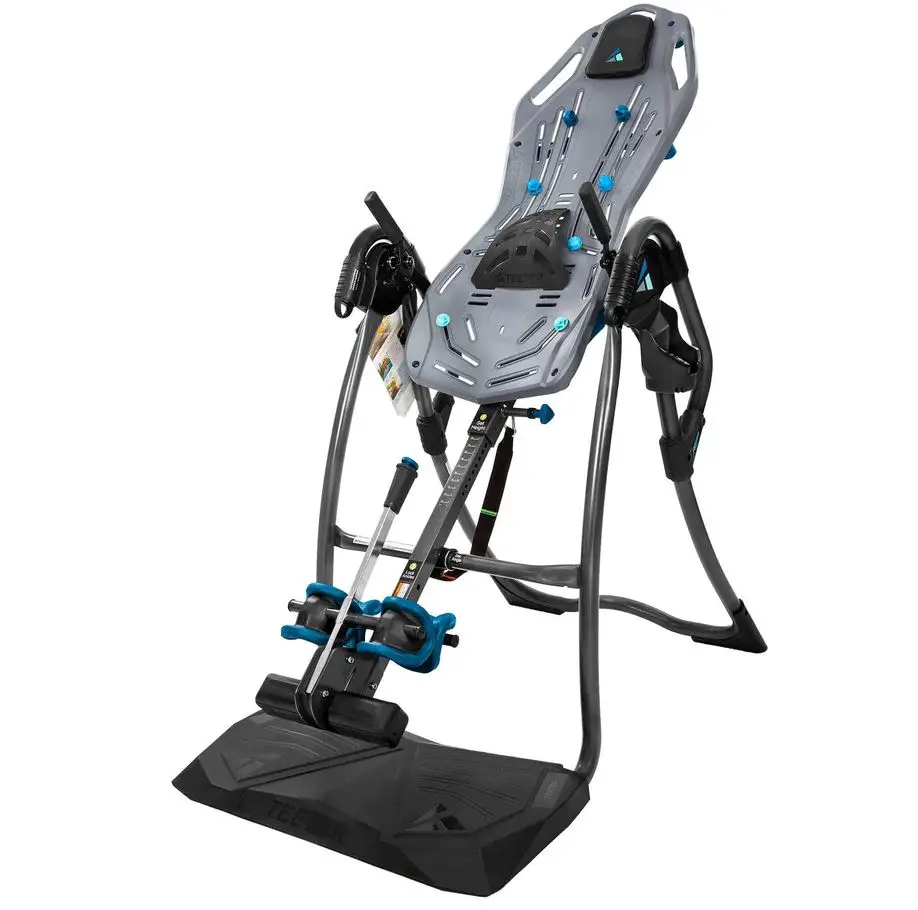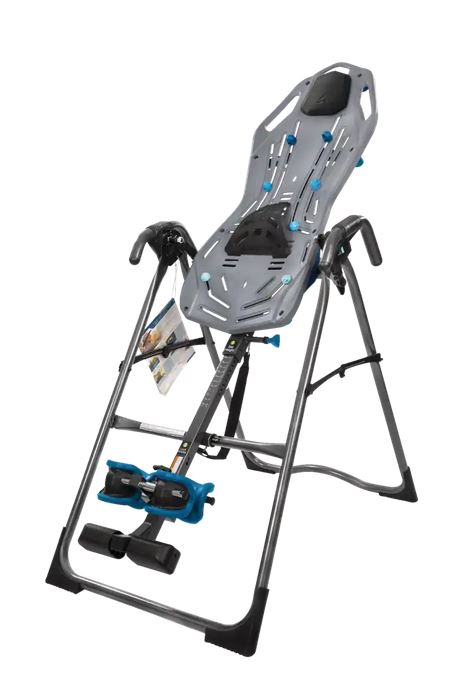Do you know the femoral nerve regulates movement in your hips, legs, and feet? Well, the femoral nerve is one of the largest nerves in your leg, and damage to this nerve can lead to discomfort, sensation in the leg, and weakness that impairs your movement. The damage can result from a pelvic fracture from injury, diabetes, or any health condition affecting your nervous system, especially the spinal cord.
Luckily, femoral neuropathy can be treated, and there is a possibility of full recovery using pharmacological options such as local aesthetics that interrupt or turn off pain and/or through nonpharmacological interventions such as inversion table therapy.
Many people ask, how effective is Inversion Table in relieving femoral nerve dysfunction? In this article, we present an honest review to help you make an informed decision.
In the article:
• What is Inversion Table?
• How do you use inversion table?
• How does inversion table relieve femoral nerve pain?
• Pros and Cons of Inversion Table in Addressing Femoral Nerve Pain
• Frequently asked questions
What is an Inversion Table?
Inversion table, also referred to as inversion therapy, works by suspending your body or part of the body upside down to relieve pressure on the joints, bones, or discs on the low back using gravitation traction.
Regarding femoral nerve pain, the inversion table is used based on two main assumptions.
1. The traction force reduces or eliminates the pain of the pinched femoral nerve by relieving all weight-bearing joints, including the knee, hip, and disc joints.
2. By stretching the quadriceps, low back muscles and hip joints takes the pressure off the femoral nerve and relax the muscles.
So How do You Use an Inversion Table?
As mentioned above, an inversion table is a simple home-based therapy commonly used to relieve femoral nerve and low back pain.
Many inversion tables allow for complete inversion. Experts suggest for femoral nerve pain relief, don’t go beyond 60 degrees. The table has a locking mechanism or straps to help you maintain the appropriate angle for optimal results.
Inversion table session of 5-10 minutes twice a day at an angle of 60 degrees allows the spine, quads, and femoral muscles to effectively stretch, which is vital in relieving the nerve pinch resulting in the pain.
Standard inversion therapy can help the leg’s target muscles causing pain to realign, allowing the nerve to function normally.
Other essential factors to consider when using the inversion table include:
• Seek professional guidance to avoid injuries.
• Ensure the table is stable standing on flat ground.
• Always start small, set the angle and begin with the smallest one.
• Ensure your legs are firmly supported to prevent you from falling.
• Lengthen your spine fully by extending your hands above your head.
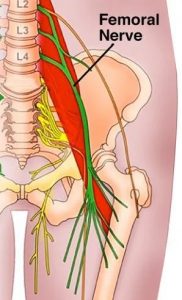
How Inversion Table Relieve the Femoral Nerve Pain and Neuropathy
Femoral nerve pain occurs when nearby tissues such as leg bones, muscles, and tight knee joints apply too much force to a nerve. As a result, the stress disrupts the femoral nerve’s function, causing pain, numbness, or weakness. Ultimately, an inversion table can assist in relieving the pain of the femoral nerve, avoiding the need to visit a pharmacy for painkiller pills.
Generally, inverting on a table regularly, often at 60 degrees angle, at least twice a day stretches the constricted and tight muscles pinching the femoral nerve causing the pain hence promoting pain relief.
Pros and Cons of Inversion Table in Addressing Femoral Nerve Pain
Pros
• It eases pressure on your spinal discs and nerves and increases blood circulation to muscles in the legs and the entire body.
• Hanging upside down on an inversion table eases the pressure on this disc, giving way to nerve movement to the leg reducing and stopping femoral pain and controlling sciatica.
• The inversion table relieves pressure on the nerves that control back and lower body muscles, such as legs reducing muscle tension. This opens and improves the nerve transport pathway allowing information to reach the legs in good time, preventing femoral pains.
• The inversion tables promote flexibility in the lower parts of the body, facilitating strength of the thighs and stability of the legs. Proper use of the inversion tables persistently improves the lower body and spinal mobility, reducing the chances of femoral nerve pains.
Cons
• It is unsafe for people with hypertension because it can lead to a rise in blood pressure.
• Some people have reported a rise in heart rate and pressure in the eye when they use inversion therapy.
• You can fall off the inversion table, meaning you may need a spotter.
Frequently Asked Questions
1. Is the inversion table safe for femoral nerve and back pain?
Before you buy the inversion table, it is always recommended that you consult your primary care physician and physical therapist. The healthcare professionals have sufficient knowledge and experience to decide if it’s best and safe for you.
2. Does the inversion table increase your flexibility and range of motion?
Yes, the therapy helps keep your joints healthy and supple. Furthermore, the stretching associated with reversing the force of gravity helps increase muscle and joint flexibility, enabling you to move easily.
3. Can anyone use the inversion table?
The inversion table is generally safe. However, there are some risks involved. People with hypertension, glaucoma, osteoporosis, ankle issues, and cardiovascular diseases should avoid using an inversion table.
4. What is the best inversion table?
Inversion tables come in different features and specifications, such as foldable, heated, or guided design. You can look for reputable vendors or consult your therapist to guide you in purchasing what are the best inversion tables that will work for you.
The best way to prevent femoral nerve pain is to remain physically active. Nonetheless, your physical therapist can help you address the discomfort by prescribing the right exercises to relieve femoral nerve pain.
Additionally, an inversion table can come in handy in case of femoral nerve pain because it helps in relieving the prolonged pressure on the nerve relieving you the pain. We, however, recommend that you always ensure you consult with your primary care provider or therapist before starting inversion therapy. Our goal is to present you with safe strategies to help eliminate pain and promote quality of life.
Credits
Kathik Kumar et al (2022, February 9). Is it good to use an inversion table? Uses and risks. https://www.medicinenet.com/is_it_good_to_use_an_inversion_table/article.htm
Mount Sinai (2022, June). Femoral nerve dysfunction. https://www.mountsinai.org/health-library/diseases-conditions/femoral-nerve-dysfunction
Tee-Melegrito, R. A. (2021). What are inversion tables? Reviews, benefits, and how to use. Medical and health information. https://www.medicalnewstoday.com/articles/inversion-table#how-to-choose
Teeter. (2020). How To Use Inversion To Relieve a Pinched Nerve. Teeter | Inversion, Cardio, Strength & Recovery Equipment for Home. https://teeter.com/blog/use-inversion-therapy-relieve-pinched-nerve/

